Finnish Navy
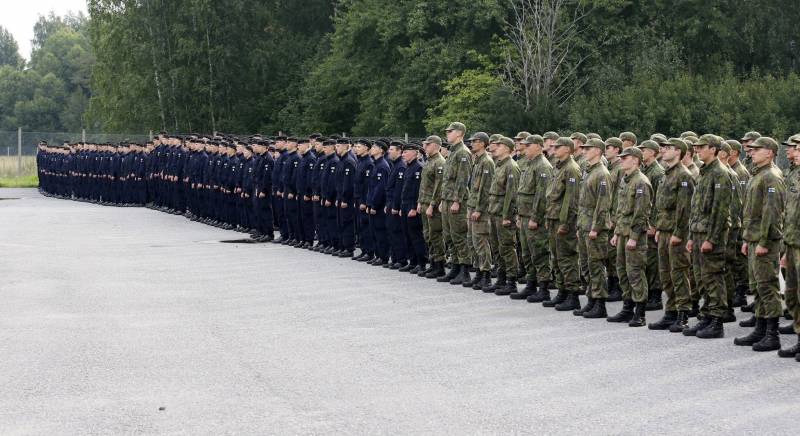
2022 recruits drafted into the Navy
With a long coastline, Finland is trying to build its own naval forces and coastal troops. At the moment, the Finnish Navy is not very large and does not have special combat capabilities. The available forces and means allow them to protect the territorial waters and coast, as well as to protect shipping in the Baltic Sea. At the same time, it is planned to take a number of measures aimed at increasing the combat capability fleet.
General features
According to the defense doctrine of Finland, the tasks of the Navy are to protect the maritime borders and coasts of the country, as well as the protection of communications. Taking into account such goals and objectives, the construction and development of all the main components of the fleet is carried out. In particular, it is envisaged to reduce the number of forces and personnel to the minimum required level, and much attention is paid to defensive systems.
The Finnish armed forces are generally small, and the Navy is no exception. According to known data, now about 3,1-3,2 thousand people serve in them. Of these, ok. 1400 people serve under the contract, the rest are conscripts. About 20% of the personnel serve on ships, boats and vessels. The rest of the military personnel are equipped with coastal units and subunits.
If necessary, the fleet and coastal troops can be reinforced by attracting a reserve. The total number of reservists exceeds 30-31 thousand people. With their help, it is planned to replenish mainly coastal troops.
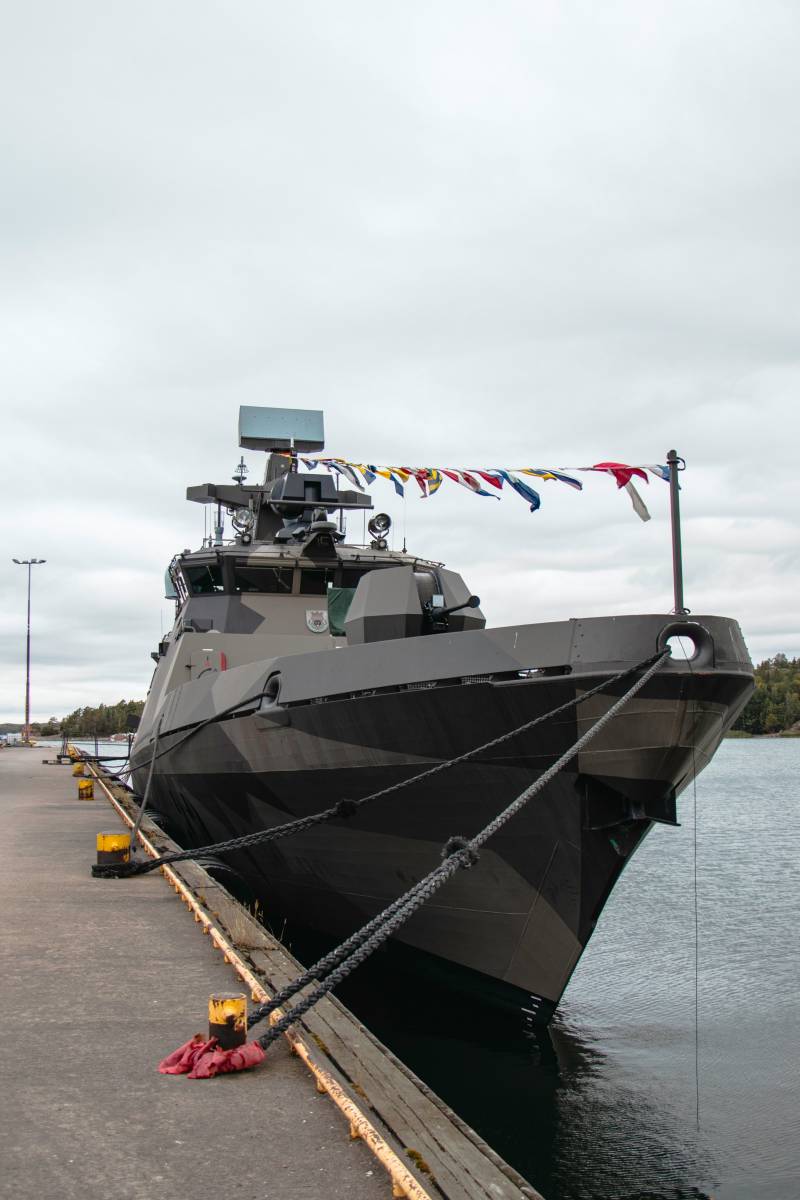
Hamina-class Pori missile boat
The organizational structure of the Navy is quite simple. The main command and headquarters of the fleet are located in Turku. Under their command are squadrons of surface forces, a coastal brigade, as well as educational, research and other organizations.
The surface forces include three squadrons of ships and boats: the 4th mine defense squadron, as well as the 6th and 7th combat squadrons. There is an 8th support squadron responsible for providing other formations. The squadrons are based in the ports of Turku, Pansio, Upinniemi, etc. It is curious that all such bases are concentrated in the southern part of Finland.
Coastal troops are represented by only one brigade. The Nyland Brigade is based in Dragsvik and includes headquarters, support units, and two battalions. The first has two companies of "shore rangers", and the second includes mortar and engineering companies, as well as a communications company.
Surface forces
The strike capabilities of the Navy are seriously limited. Only eight missile boats of two projects carry anti-ship weapons. So, in the early nineties, four boats of the Rauma type were built. Such a boat has a displacement of 240 tons and carries a launcher for six MTO-85M missiles (the Finnish version of the Swedish RBS-15). There is also a 40-mm gun, machine guns and a rocket launcher. If necessary, the launcher for missiles is replaced by a dropper for mines.
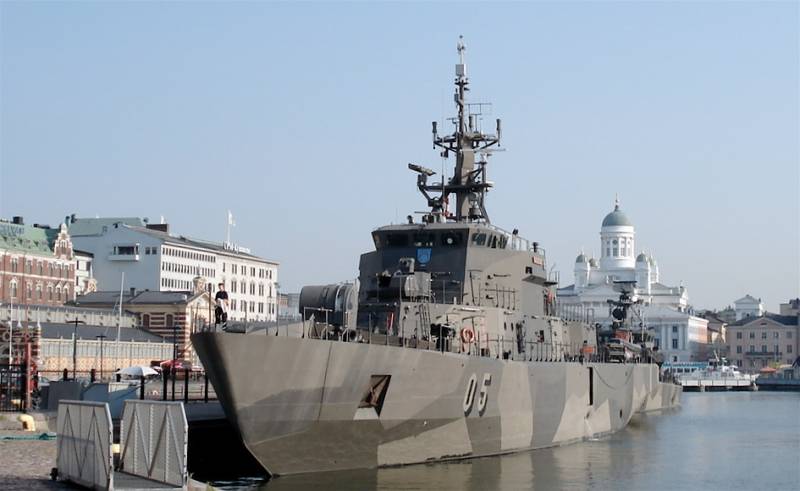
Mine defense ship Hämeenmaa
In the 250s, four boats of the Hamina type were built. They are larger and have a displacement of 85 tons. The armament complex includes four MTO-57M anti-ship missiles, a XNUMX-mm gun and an Umkhonto-IR air defense system. The use of mines is envisaged; the dismantling of missiles is not required.
The main part of the surface fleet consists of mine defense ships. In particular, it is the minesweeper Hämeenmaa that is the flagship of the Navy. In total, the Finnish fleet includes 18 ships of various types and classes, capable of laying, searching and clearing mines.
The largest in their class are two ships of the Hämeenmaa class, commissioned in the early nineties. Ships with a displacement of 1450 tons for self-defense carry a 57-mm gun, Umkhonto-IR air defense systems and several machine guns. There are also two RBU-1200 jet bombers, four rail installations for sea mines with an ammunition load of up to 120-150 units. and two rail-mounted depth charge droppers.
In the early nineties, three ships of the Pansio type with a displacement of 680 tons were also built. They can carry and install up to 50 mines. For self-defense, there are combat modules with machine guns and grenade launchers.
Four Kuha-class minesweepers, which have been in service since the mid-seventies, remain in service, as well as six newer Kiiskis. The newest in this class are the three Italian-built Katanpää ships that entered the fleet in 2012-16. Minesweepers of all three types carry various equipment for detecting and clearing/destroying mines.
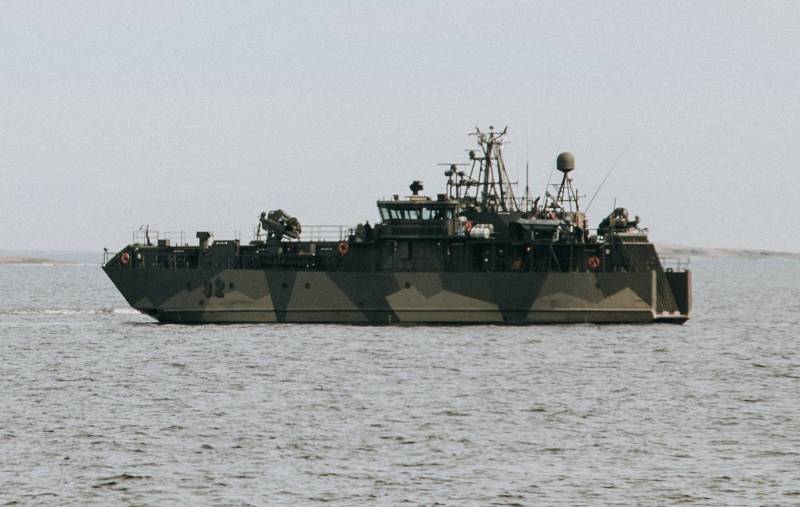
Minesweeper Pyhäranta type Pansio
There is a fairly large landing fleet. It includes at least 70-80 boats of several projects. Watercraft with a displacement of up to 30-32 tons are capable of carrying up to 20-25 paratroopers and supporting them with fire. There are also several dozen inflatable boats, also suitable for landing.
The Navy has various types of support vessels. There are crew boats and transport vessels, training and research vessels, tugboats and cable layers. The fleet is also responsible for the operation of three environmental monitoring vessels. At the same time, the Louhi, Halli and Hylje pennants formally belong to the Finnish Environment Institute. Curiously, these vessels are larger and heavier than any combat unit of the Navy.
Coastal troops
The armament and equipment of the coastal troops of the Navy does not fundamentally differ from the material part of the army, but it has its own characteristics. In particular, coastal units have anti-ship missiles and artillery, which are absent in the ground forces.
Coastal rangers have the same small arms and anti-tank weapons as the ground forces. The Nyland Brigade mortar company uses the 81mm KRH-71 and KRH-96 systems, as well as the 120mm KRH-85 and KRH-92 mortars. All mortars have a wearable / portable version. There are no self-propelled guns.
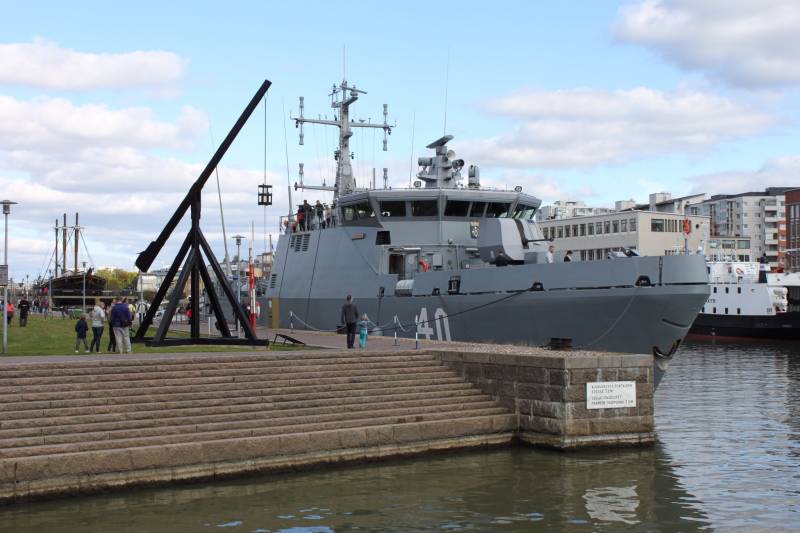
Lead ship of the Katanpää class
Coastal units use Sisu XM-180/185 armored personnel carriers for movement, similar to army ones. There is also a variety of vehicles, incl. with special attachments.
Up to 30 coastal artillery systems 130 53 TK are deployed in critical areas of the coast. These are stationary systems with 130 mm caliber guns. To combat approaching ships, self-propelled systems on automobile chassis, armed with anti-ship missiles MTO-85M, are also intended.
Coastal subunits can operate both independently and in cooperation with surface forces. In the latter case, the fleet must provide landing craft, various transports or pennants with the possibility of fire support.
Development prospects
In 2015, the development of a naval modernization program called Laivue 2020 ("Squadron 2020") began. It provided for various measures to develop the organizational structure, surface forces and coastal troops with implementation during the twenties. As a result of these processes, the appearance of the Navy will change significantly, and their capabilities will grow.
The main component of the Squadron 2020 is the Monitoimialus 2020 project, which provides for the construction of four multi-purpose corvettes. In the future, such ships will have to replace Hämeenmaa minesweepers and Rauma missile boats. The lead corvette under the name Pohjanmaa is planned to be laid down in the near future and commissioned into the Navy in 2028.
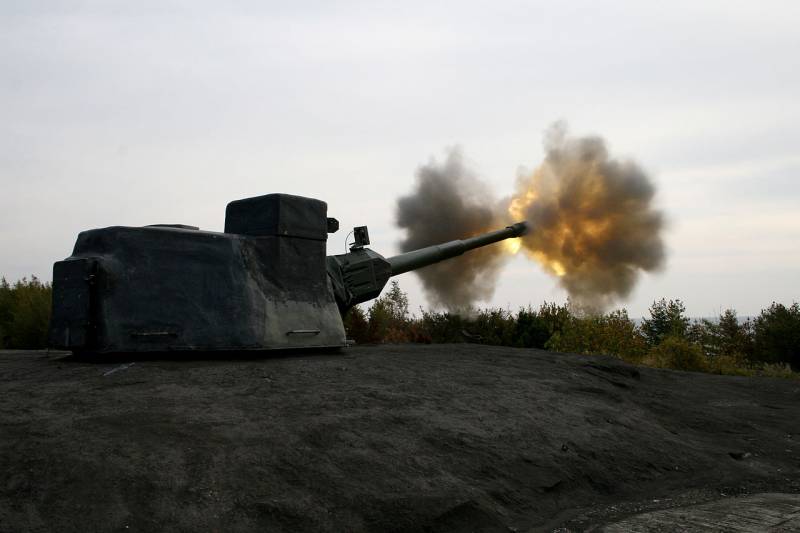
Coastal artillery complex 130 53 TK
The Pohjanmaa project provides for the construction of a ship with a displacement of 3,9 thousand tons with advanced rocket-artillery and torpedo armament. He will receive modern anti-ship missiles Gabriel V, as well as, for the first time in Finnish practice, a vertical launcher Mk 41. It is planned to use anti-aircraft missiles with it.
It is also planned to upgrade the fleet of minesweepers. New ships and boats of this class will replace the obsolete pennants that have been in service since the XNUMXs and XNUMXs. Based on the experience of recent projects, the possibility of purchasing foreign ships is not excluded.
The development of coastal formations to a certain extent will resemble the modernization of ground forces. In the future, they will have to master armored vehicles and other modern types of products. In particular, deliveries of Spike multi-purpose missile systems have already begun. In the future, they can replace the existing MTO-85M missiles. Missiles with sufficient range can also be a substitute for stationary artillery.
Disabled
Thus, the Finnish Navy is not very large and has a number of other limitations. Surface and coastal formations are able to work effectively only in the coastal zone, protecting it from attacks by a potential enemy. Depending on the prevailing situation, the fleet can attack surface targets, place or remove mines, and also carry out landings on the islands.
Apparently, the current state of the Navy is considered unsatisfactory. In this regard, ambitious plans for their development have been drawn up. It is proposed to build new ships that are seriously different from the cash pennants, as well as to carry out a large rearmament of coastal troops. Such plans are scheduled until the end of the current decade - and in a few years it will become clear how realistic they were, and how their implementation affected the capabilities of the fleet.
Information